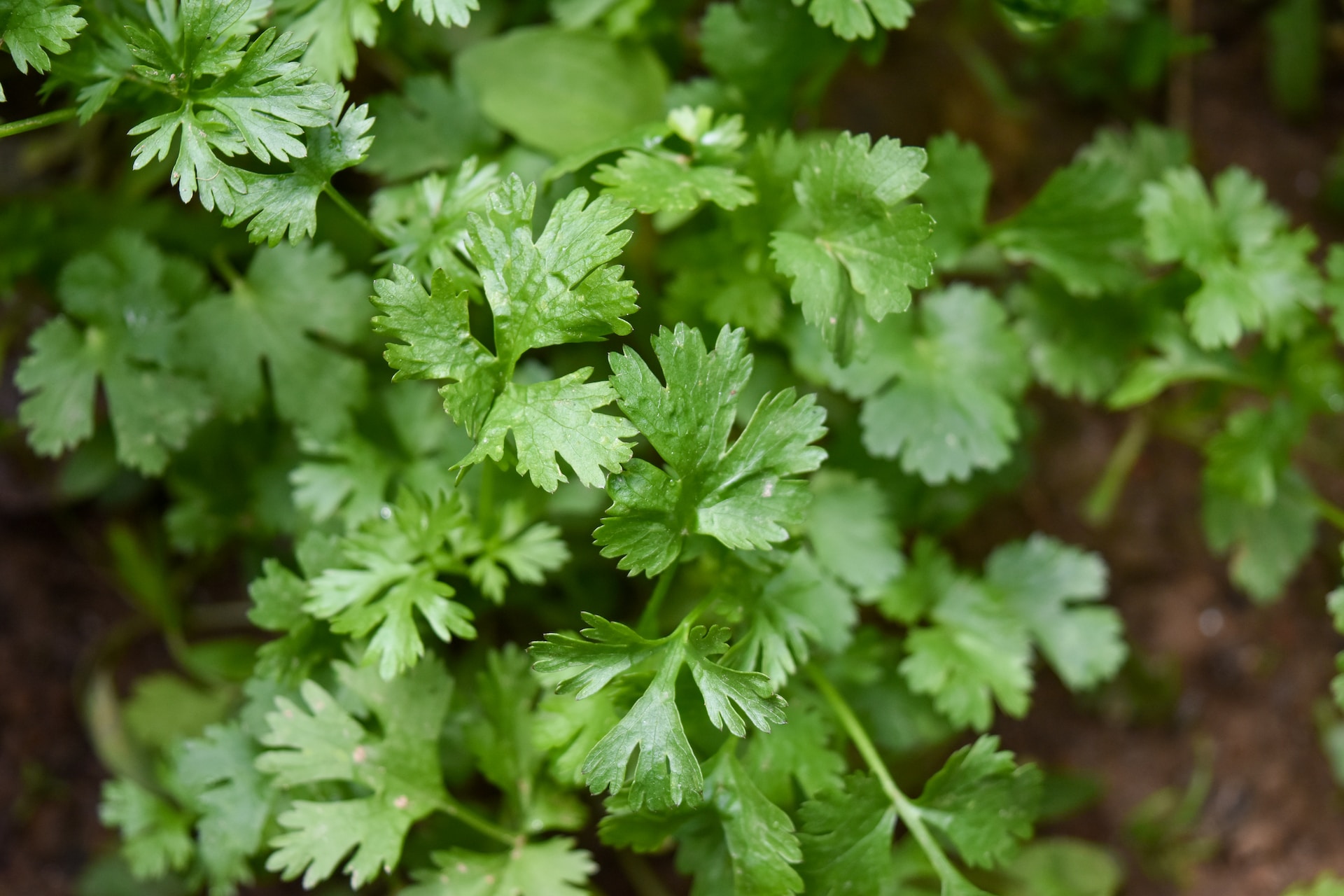
Coriander leaves, also known as cilantro or Chinese parsley, are a versatile herb that is widely used in cuisines across the globe. Whether it’s sprinkled over a salad, used as a garnish, or incorporated into a flavorful sauce, coriander leaves add a distinctive and refreshing flavor to dishes. Aside from its culinary uses, coriander leaves also boast numerous health benefits, making it a popular choice among health-conscious individuals.
In this article, we will explore 20 fascinating facts about coriander leaves, shedding light on its history, nutritional value, and unique properties. From its ancient origins to its diverse uses in different cultures, you’ll gain a deeper understanding of why coriander leaves have become a staple in kitchens worldwide.
Key Takeaways:
- Coriander leaves, also known as cilantro, are versatile and packed with vitamins. They add a refreshing citrusy flavor to dishes and have been used for centuries in cooking and traditional medicine.
- Coriander leaves are easy to grow at home and can be used in both raw and cooked dishes. They offer health benefits, including supporting heart health and aiding digestion.
Coriander leaves are also known as cilantro.
Coriander leaves, scientifically known as Coriandrum sativum, are commonly referred to as cilantro in many parts of the world, particularly in the Americas.
Coriander leaves are versatile and widely used in culinary traditions across the globe.
From Asian curries to Mexican salsas, coriander leaves are celebrated for their unique flavor and are an essential ingredient in many cuisines around the world.
The aroma of coriander leaves is distinct and often described as citrusy and refreshing.
When used in cooking, coriander leaves add a distinctive aromatic note that enhances the taste and fragrance of dishes.
Coriander leaves are rich in vitamins and minerals.
They are an excellent source of vitamin C, vitamin K, and dietary fiber, making them a nutritious addition to any meal.
Coriander leaves have been used for centuries for their medicinal properties.
In traditional medicine, coriander leaves have been used to alleviate digestive issues, reduce inflammation, and promote overall well-being.
Coriander leaves are commonly used as a garnish.
They are often sprinkled over dishes to add a pop of color and freshness, enhancing the visual appeal of the meal.
The leaves and seeds of the coriander plant have different flavors.
While coriander leaves have a bright and citrusy taste, coriander seeds have a warm, nutty flavor commonly found in many spice blends.
Coriander leaves are easy to grow at home.
They thrive in a variety of climates and can be grown in containers or gardens, allowing home cooks to have a fresh supply at their fingertips.
Coriander leaves are a staple in Indian cuisine.
From chutneys to curries, coriander leaves are an integral part of many traditional Indian dishes, adding depth and complexity to the flavors.
Coriander leaves can be used in both raw and cooked dishes.
They can be added as a finishing touch to salads, soups, and stir-fries, or incorporated into marinades and sauces.
Coriander leaves have been associated with various health benefits.
They are believed to have antioxidant, anti-inflammatory, and antimicrobial properties that can support overall health and well-being.
Coriander leaves are a popular ingredient in detoxifying drinks.
Their cleansing properties are often harnessed in fresh juices and smoothies to support the body’s natural detoxification processes.
In some cultures, coriander leaves are considered a symbol of love and fertility.
They are used in traditional ceremonies and celebrations to bring good fortune and blessings.
Coriander leaves are often paired with other herbs and spices.
Popular combinations include coriander leaves with mint, basil, cumin, ginger, and garlic, creating complex and harmonious flavor profiles.
Coriander leaves can help reduce the risk of heart disease.
Studies have shown that the antioxidants present in coriander leaves can help lower cholesterol levels and support heart health.
Coriander leaves are a natural source of dietary fiber.
Incorporating coriander leaves into the diet can help promote a healthy digestive system and prevent constipation.
Coriander leaves are known for their cooling properties.
They are often used in dishes to balance spicy flavors and provide a refreshing and soothing effect.
The use of coriander leaves dates back thousands of years.
They have been mentioned in ancient texts and were a popular herb in ancient Egyptian, Greek, and Roman cuisines.
Coriander leaves are used as a natural preservative.
The antimicrobial properties of coriander leaves have made them a popular ingredient in preserving food and preventing spoilage.
Coriander leaves can be used to make delicious pesto.
Just like basil, coriander leaves can be blended with nuts, garlic, and olive oil to create a vibrant and flavorful pesto sauce.
Conclusion
Coriander leaves, also known as cilantro or Chinese parsley, are a popular herb used in cooking around the world. These small green leaves pack a punch both in flavor and nutritional value. Whether you love it or hate it, coriander leaves have a fascinating history and a wide range of uses.In this article, we uncovered 20 interesting facts about coriander leaves. We explored their origins, their health benefits, and various culinary uses. From their presence in ancient Egyptian tombs to their role in traditional medicine, coriander leaves have been valued for centuries.Whether you’re adding them to a delicious curry, using them as a garnish, or adding a fresh zing to your salsa, coriander leaves are a versatile and flavorful herb that can elevate any dish. So, the next time you come across these small green leaves in the grocery store or a restaurant, remember the rich history and benefits that come with this herb.
FAQs
1. What are coriander leaves?
Coriander leaves are the leaves of the coriander plant, also known as cilantro or Chinese parsley. They have a distinctive flavor and are commonly used in various cuisines around the world.
2. Are coriander leaves and cilantro the same?
Yes, coriander leaves and cilantro are the same thing. In some regions, the leaves are referred to as coriander, while in others, they are called cilantro.
3. How do coriander leaves taste?
Coriander leaves have a vibrant, citrusy flavor with a hint of peppery undertones. They can add a fresh and aromatic touch to dishes.
4. What are the health benefits of coriander leaves?
Coriander leaves are rich in vitamins, minerals, and antioxidants. They can help improve digestion, lower cholesterol levels, and have antibacterial properties.
5. How can I use coriander leaves in cooking?
Coriander leaves can be used as a garnish, added to soups, salads, and curries, or used to make flavorful chutneys and sauces.
6. Can I grow coriander leaves at home?
Yes, coriander leaves can be easily grown at home. They thrive in well-drained soil and require adequate sunlight and water.
7. Are coriander leaves used in any traditional medicine?
Yes, coriander leaves have been used in traditional medicine for their digestive and anti-inflammatory properties. They are also believed to have detoxifying effects.
8. Can coriander leaves be frozen?
Yes, coriander leaves can be frozen for future use. Wash and chop the leaves, then store them in an airtight container or freeze them in ice cube trays with a little water.
9. Are there any side effects to consuming coriander leaves?
For most people, coriander leaves are safe to consume. However, some individuals may be allergic to coriander and may experience symptoms such as skin rashes or respiratory issues.
10. Can coriander leaves be used in beverages?
Yes, coriander leaves can be used to add a refreshing twist to beverages. They can be used to flavor homemade lemonade, smoothies, or infused water.
Coriander leaves, also known as cilantro, offer a world of culinary possibilities and health benefits. If you're curious to learn more about this versatile herb, consider exploring our articles on cilantro facts that will surprise you. Dive deeper into the realm of herbs and their fascinating properties. Spice up your knowledge by discovering interesting facts about spices from around the globe. Whether you're a seasoned cook or just starting your culinary journey, these articles will provide valuable insights and inspire you to incorporate more flavorful ingredients into your dishes.
Was this page helpful?
Our commitment to delivering trustworthy and engaging content is at the heart of what we do. Each fact on our site is contributed by real users like you, bringing a wealth of diverse insights and information. To ensure the highest standards of accuracy and reliability, our dedicated editors meticulously review each submission. This process guarantees that the facts we share are not only fascinating but also credible. Trust in our commitment to quality and authenticity as you explore and learn with us.


